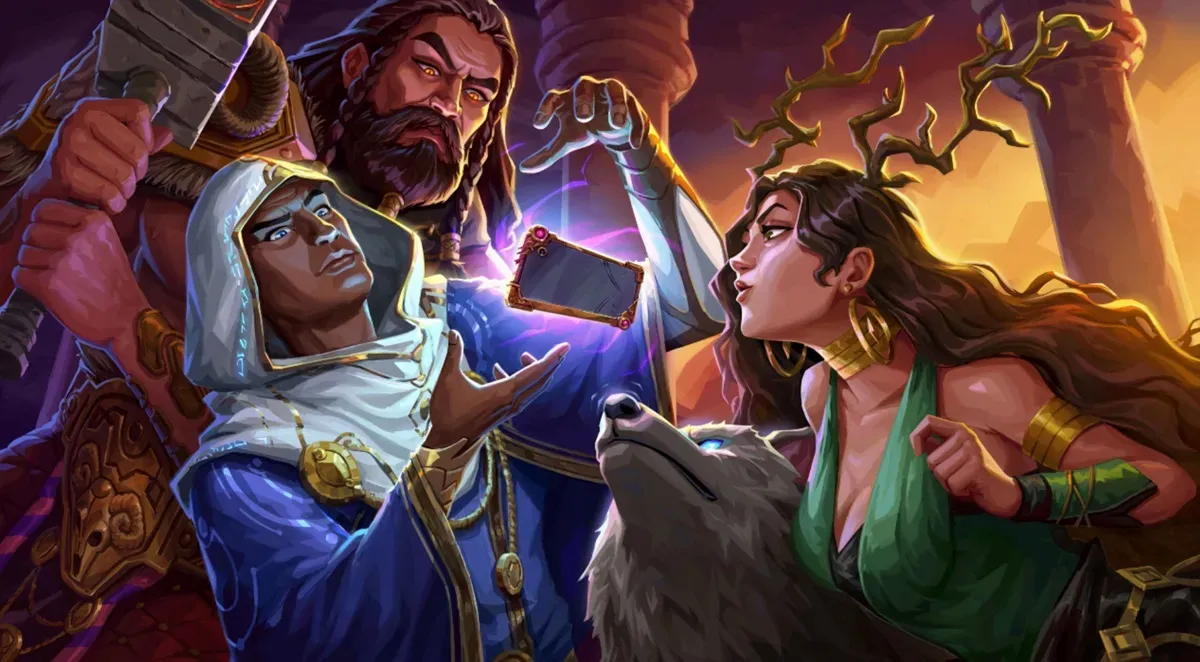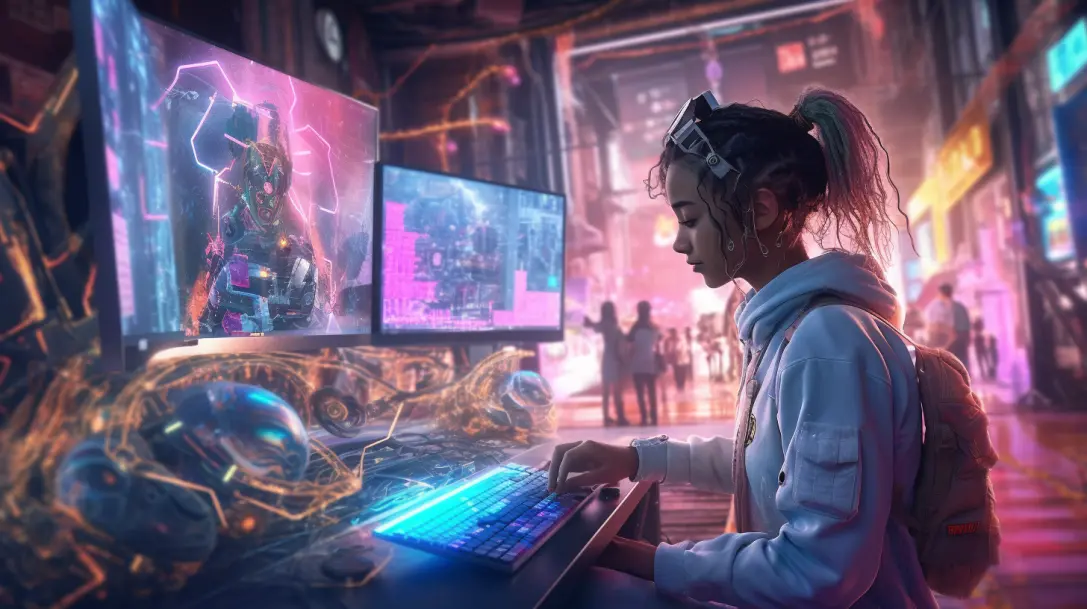In the rapidly evolving entertainment industry, a new meta has taken center stage: Play-to-Earn, also called P2E or p2e for short. This innovative concept has revolutionized the traditional gaming industry by seamlessly intertwining virtual economies with real-world value and blockchain technology.
Emerging from the realm of blockchain technology and decentralized finance (DeFi), Play-to-Earn beckons a new era where gamers become economic participants, redefining the very essence of play. This article unpacks everything you need to know about the core of Play-to-Earn. We will discuss its mechanics, implications for traditional gaming, and the transformative impact it holds for both avid players and the broader gaming industry at large.

Key Definitions
Play-to-Earn: "Play-to-Earn represents a genre of blockchain-based games that incorporate player-owned economies through the use of in-game assets represented by tokens and NFTs.”
Blockchain Game: "A blockchain game is any game that uses blockchain technology to enhance or rearchitect traditional video games."
NFT Game: "An NFT game is a video game that uses NFTs as a core part of their gameplay and economy. NFTs, or Non-Fungible Tokens, are 1-of-1 tokens generated by smart contracts and blockchain technology"
The current landscape of Play-to-Earn and blockchain games is witnessing a significant shift within the gaming ecosystem. Over the past year, a surge of Play-to-Earn games has emerged, with Axie Infinity standing out as a prominent example in terms of economic growth. In the next section of this article, we will cover a few of the more popular examples of Play-to-Earn (p2e) games.
Crypto and Play-To-Earn
For many, getting paid to play video games sounds like a dream. This attractive idea is no longer isolated to professional gamers. Various crypto games let you play to earn money. Play-to-Earn gaming is rising in popularity year over year.
According to recent data: "The global Play-to-Earn NFT Games market size was valued at USD 3292.73 million in 2022 and is expected to expand at a CAGR of 17.93% during the forecast period, reaching USD 8856.95 million by 2028.” In the next section of this article, we'll discuss what Play-to-Earn games are, how they work, and their challenges and risks.

Examples of Play-To-Earn Games
There are various Play-to-Earn gaming models. Some let players earn rewards in the form of cryptocurrency. Others mint in-game items as NFTs that can be sold on the secondary market. In some cases, games use both models.
(1) Gods Unchained
For example, Gods Unchained is a popular p2e and NFT trading card game (TCG) by Immutable (IMX) on the Ethereum blockchain. Here, cards of varying rarities can be openly bought, sold, and traded as NFTs. Players not only build their preferred decks but also earn $GODS tokens by playing and winning games. These tokens can be used to purchase new card packs or contribute to the in-game governance mechanism.
Gods Unchained closely mirrors the gameplay of popular online card games like Hearthstone and Legends of Runeterra. In this player-versus-player (PvP) format, participants strategically employ decks of cards to outwit opponents and secure victory.

To expand their card collection, players acquire randomized packs of NFT cards using the game's native currency, $GODS tokens. This currency can be obtained through direct purchases from a marketplace or earned by actively engaging in gameplay. The uniqueness of these NFT cards lies in the fact that once acquired, players have full ownership, and a dedicated marketplace facilitates the seamless buying and selling of these digital trading cards.
Gods Unchained is a prime example of a p2e game that integrates blockchain technology to elevate a familiar gaming model. In contrast to games like Hearthstone or Legends of Runeterra, where players lack complete ownership of their cards, Gods Unchained harnesses the power of NFTs to emulate the advantages seen in physical card games like Yu-Gi-Oh! and Magic the Gathering. This includes the freedom to trade, purchase, and sell cards, all within the digital realm.

(2) The Sandbox
The Sandbox, a decentralized virtual world boasting over 27,000 landowners in its alpha phase, now hosts nearly 700 live player-created games with 50,000-100,000 monthly active users. Fueled by the $SAND token, Sandbox features a user-friendly Game Maker, empowering creators in game design, asset creation, and world-building.
Recent partnerships with over 400 top brands, including FaZe Clan, The Walking Dead, Snoop Dogg, and Ubisoft, have broadened the platform's appeal. The metaverse now boasts over 20 branded avatar collections, allowing players to express themselves through digital identities.
The Sandbox is a metaverse game with unique play-to-earn elements. Players can buy and sell land to be used for games and virtual experiences. You can also design gaming assets in the Sandbox's VoxEdit software, which can be sold in the Sandbox marketplace and used to build scenes or games.

Other P2E Examples
Blockchain technology and smart contracts are essential to the p2e gaming experience. Players must connect their wallets to the game before they can play. When a player earns an NFT or in-game token, smart contracts transfer ownership of these digital assets to the player.
In My Neighbor Alice, players can collaborate to build homes and achieve other goals. They can buy in-game items using the game’s native currency, the ALICE token, and earn rewards through staking and governance. They also can make a profit on loans and borrow NFTs through its DeFi system.

Free-To-Play Games
The most profitable games are typically those that are free to play. These games generally rely on in-game purchases for revenue. People can play for free but are incentivized to buy items that help them win.
For example, the popular game Alien Worlds rewards players based on how many minerals they mine and the overall quality of their mining tools. Players are incentivized to buy better tools since they can improve their earning potential. Free-to-play games also have a better chance of surviving bear markets. The once-popular Axie Infinity game was on the verge of extinction due to plummeting revenue throughout the latest bear market.

Axie Infinity requires people to own Axie NFTs to play. Additionally, they must buy smooth love potion (SLP) tokens to breed new characters. Axie Infinity's sales dropped from a high of $869.5 million in August 2021 to just $3.1 million in March 2022. Still, despite its significant downturn, Axie Infinity makes more than most of its competitors.
Advantages of Play-To-Earn Games
A Play-to-Earn game gives players ownership of the items they earn as they play. These digital assets have real-world value and can be sold at any time. These games also give developers new ways to monetize their efforts, as they can earn royalties on secondary sales of their gaming assets.
The p2e crypto game ecosystem is mostly decentralized. The games often have governance tokens that let players influence their decision-making processes. For example, Decentraland's MANA governance token is used to vote on proposals. Players use their MANA balance to vote on topics ranging from emotes to collaboration with artists. The token for Splinterlands, where you battle players using trading cards, is Dark Energy Crystals.

The blockchain's public ledger lets players closely monitor item releases and distribution. When a developer claims to release 500 items, players can review the public ledger to ensure this statement is true. Players could quickly identify the scheme if a game's development team kept many of these items to themselves. The public nature of these gaming elements incentivizes developers to act honestly.
Free p2e crypto games enhance accessibility for players in developing countries. In developing nations with low living costs, Play-to-Earn games present a new way for people to make a living or earn extra money.
Challenges and Risks
Play-to-Earn smart contracts contain large sums of money. In some cases, the total value of their assets is in the tens of millions. Hackers who exploit these contracts can crash the value of players' assets and steal money from developers.
For example, Axie Infinity suffered $620 million in losses after one of its developers opened a fake job offer from hackers. The game's decline in revenue began well before the hack, but the exploit certainly didn't help it recover.
These games also rely on cryptocurrencies for revenue and player payouts. Despite the inherent security and speed offered by many cryptocurrencies, they can be volatile, which may negatively impact earnings. Depending on the blockchain developers use for their games, transaction speeds and costs can adversely affect the gameplay experience.

Although Play-to-Earn games can enhance accessibility for players in developing nations, they can also be used to exploit them. In late 2022, Mikhai Kossar, a chartered accountant and member of Wolves DAO, said he envisioned a future where poor people are used as NPCs.
"With the cheap labor of a developing country, you could use people in the Philippines as NPCs (non-playable characters), real-life NPCs in your game. They can just populate the world, maybe do a random job or just walk back and forth, fishing, telling stories, a shopkeeper, anything is really possible.”
Hedera offers a solution for the p2e gaming ecosystem. The Hedera Consensus Service allows developers to decouple consequential in-game events from live gameplay. In doing so, developers can postpone smart contract interactions until the gameplay history is validated.
Hedera's low fees and high throughput ensure players will never be burdened by slow in-game interactions or payouts. Additionally, Hedera's hashgraph consensus mechanism is asynchronous Byzantine Fault Tolerant (ABFT), the highest possible level of security for a distributed ledger system. You can learn more on their website here.
Final Thoughts
Play-to-Earn gaming is set to continue its meteoric rise in popularity. Still, these games must be built with fast, inexpensive ledgers that enhance the player experience. Developers must ensure players' assets are secured and protect children and players in developing nations from exploitation.
In essence, p2e is not just about introducing monetary incentives to video games but fundamentally altering how players perceive the value of their time, effort, and attention within a game.
It represents a shift towards a player-centric economy, where tangible digital assets become tradable commodities, reminiscent of real-world transactions. As blockchain continues to influence the gaming landscape, p2e is poised to become a defining trend, offering players a new standard for digital asset ownership and open in-game economies.
This article was inspired by an original blog post from Hedera you can read the full post on their website here for more information.





